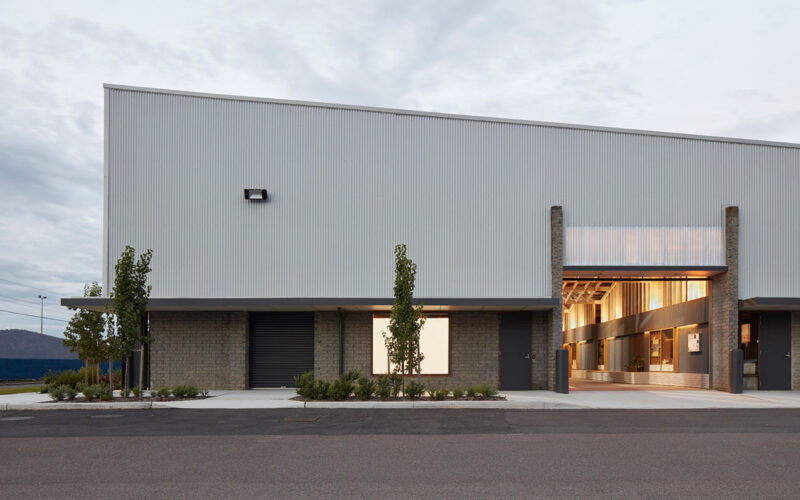The demand for efficient, high-performance distribution centers has grown significantly with the rise of e-commerce, global supply chains, and advanced logistics. Designing these large-scale facilities requires a deep understanding of operational flow, automation, and sustainability to optimize both efficiency and cost-effectiveness.
A Stendel + Reich distribution center architect focuses on creating well-planned layouts that streamline operations, improve storage capacity, and integrate cutting-edge technology to support seamless logistics.
Here’s a closer look at how architects design modern distribution centers for maximum efficiency.
1. Understanding Operational Needs and Workflow
Why It’s Important:
Every distribution center functions differently based on the type of goods stored and transported. Architects must understand:
- The volume of goods handled daily.
- The movement of products from receiving to storage to shipping.
- The need for automated systems and robotics.
Key Architectural Considerations:
- Zoning areas efficiently to separate incoming and outgoing shipments.
- Designing wide aisles to accommodate forklifts and automated vehicles.
- Allowing for future expansion as distribution demands grow.
A well-structured workflow reduces delays and enhances productivity.
2. Maximizing Space Utilization
Why It’s Important:
Distribution centers need high-density storage while maintaining accessibility for retrieval and shipping.
Design Strategies:
- High ceilings for vertical storage solutions.
- Automated racking systems to maximize warehouse space.
- Optimized dock locations for smooth inbound and outbound logistics.
Using smart space planning ensures that the facility operates at peak efficiency.
3. Incorporating Advanced Automation and Robotics
Why It’s Important:
Modern distribution centers rely on automation to improve accuracy and reduce human error.
Architectural Considerations:
- Designing for automated guided vehicles (AGVs) that move inventory efficiently.
- Integrating robotic picking and sorting systems into the facility layout.
- Ensuring seamless connectivity between automated and manual operations.
These innovations help businesses process orders faster while reducing labor costs.
4. Energy Efficiency and Sustainability
Why It’s Important:
Energy consumption in distribution centers is high due to lighting, refrigeration, and automation. Sustainable design can significantly reduce operating costs and environmental impact.
Sustainable Solutions:
- LED lighting with motion sensors to minimize energy waste.
- Solar panel integration for renewable energy use.
- High-performance insulation to regulate temperature efficiently.
Green building strategies create cost-effective, eco-friendly distribution centers.
5. Designing for Worker Safety and Comfort
Why It’s Important:
A well-designed distribution center prioritizes worker safety and ergonomics to reduce injuries and improve efficiency.
Key Safety Features:
- Clear walkways and signage to prevent accidents.
- Proper ventilation and temperature control for worker comfort.
- Fire suppression and emergency exits that meet safety regulations.
6. Location and Site Planning
Why It’s Important:
The location of a distribution center affects shipping costs, transit times, and supply chain efficiency.
Factors Considered in Site Selection:
- Proximity to highways, ports, and rail systems for faster transportation.
- Availability of skilled labor for facility operations.
- Zoning regulations and land use restrictions that impact expansion.
Selecting the right location reduces delivery times and improves supply chain performance.
7. Designing for Future Scalability
Why It’s Important:
Distribution centers must be flexible enough to adapt to business growth and technological advancements.
Scalable Design Approaches:
- Modular layouts that allow for warehouse expansion.
- Adjustable racking systems for different storage needs.
- Upgraded automation infrastructure to accommodate future advancements.
A scalable facility ensures long-term efficiency and cost savings.
8. Security and Inventory Protection
Why It’s Important:
Distribution centers house valuable goods, making security a top priority.
Security Measures Integrated into Design:
- Access control systems to restrict entry to authorized personnel.
- Surveillance cameras and real-time monitoring for theft prevention.
- Fire-resistant and climate-controlled storage for sensitive goods.
Strong security measures protect both inventory and workers.
Conclusion
Designing a large-scale distribution center involves strategic planning, advanced technology integration, and sustainability considerations. A Stendel + Reich distribution center architect ensures that every aspect of the design supports efficiency, security, and scalability while meeting the demands of modern supply chains.
With the right architectural approach, businesses can optimize operations, reduce costs, and enhance logistics performance, making distribution centers a key asset in global commerce.

